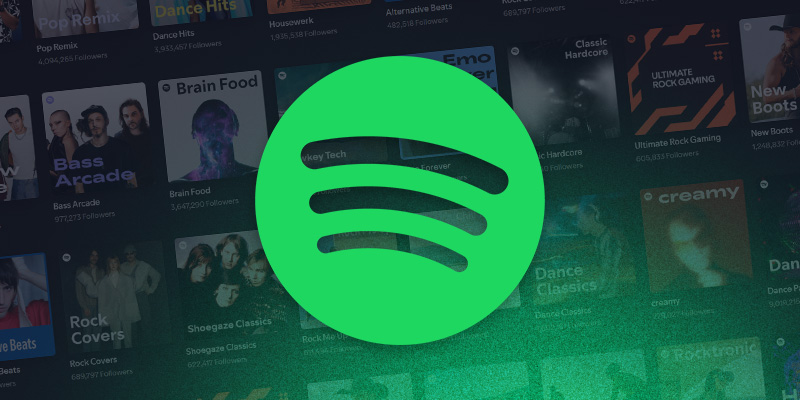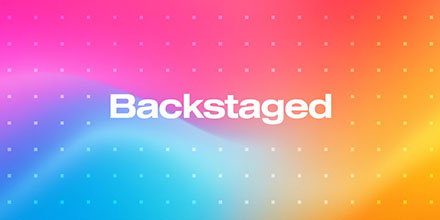
How to Get Featured on Spotify Playlists: A Step-by-Step Guide
Practical steps and tips to increase your chances of landing on Spotify playlists to grow your audience.
Introduction
In today’s music industry, getting featured on Spotify playlists can significantly boost an artist’s visibility, streams, and success. As one of the largest streaming platforms, Spotify offers a variety of playlist types that can help elevate your music career. From gaining new listeners to enhancing your credibility, playlist placements are a powerful tool for any artist. However, the process of landing a spot on these playlists can be quite competitive and complex.
This guide will walk you through the essential steps to get your music noticed by Spotify’s playlist curators, from optimizing your profile to crafting the perfect pitch. By following these strategies, you can improve your chances of landing a coveted spot on a playlist and reaching a wider audience.
Let’s dive in and explore how you can make the most of Spotify’s playlist ecosystem to advance your music career.
Understanding Spotify’s playlist ecosystem
To effectively get featured on Spotify playlists, it’s essential to first understand the different types of playlists and how they differ from each other. Spotify’s playlist ecosystem can be categorized into three main categories:
-
Editorial playlists: Curated by Spotify’s in-house team of editors, these playlists feature handpicked tracks and are often highly influential. Getting on these playlists usually requires a very strong pitch and a really standout song.
-
Algorithmic playlists: These playlists are generated based on user data and listening habits. Examples include “Discover Weekly” and “Release Radar”. While you can’t directly pitch to these, having a strong listener base and consistent engagement can increase your chances of being included.
-
Curated playlists: Managed by individual playlist creators or influencers, these playlists can vary widely in genre and style. Building relationships with these curators and engaging with their playlists can open doors for playlist placements.
Understanding these playlist types helps you tailor your approach, whether you’re pitching to Spotify’s editorial team, optimizing your profile for algorithmic consideration, or connecting with curators for targeted playlists. Each type offers unique opportunities, and knowing how to navigate them significantly increases your chances of success.
Prepare your music
Before you start pitching your music to Spotify playlists, you need to ensure that your work is polished and professional.
Production quality
The quality of your music plays a very significant role in how they are received by the playlist curators. Make sure you focus on and pay attention to:
- Professional production: Invest in high-quality production to ensure your music stands out. Poorly produced tracks are less likely to catch the attention of curators.
- Mixing and mastering: Make sure your music is well-mixed and mastered. Tracks that sound clear and balanced are more appealing and more likely to be added to playlists.
Metadata and tagging
Proper metadata and tagging are essential for ensuring your music is easily discoverable and categorized correctly.
Ensure that all details such as song title, stage name, album name, and genre are accurate and consistent. Use relevant tags to help Spotify’s algorithms categorize your music effectively. This makes it easier for your track to be discovered by the right playlists.
By focusing on high-quality recordings and precise metadata, you lay a strong foundation for getting your music featured on Spotify playlists.
Optimize your Spotify profile
To increase your chances of being featured on Spotify playlists, it’s crucial to present a well-optimized artist profile. This section covers the essential elements of creating an engaging and professional profile.
Profile and cover photos
Your profile and cover photos are the first visual impressions curators and listeners will have of you. Make sure you:
- Use high-quality images: Choose clear, professional photos that reflect your brand and style. Avoid blurry or poorly lit images.
- Consistency: Ensure that your photos are consistent with your overall brand and image across other platforms.
Bio and links
An engaging bio and relevant links provide context and additional information about you.
- Bio: Write a concise and interesting bio that highlights your achievements, style, and personality. Use this space to connect with listeners and curators.
- External links: Include links to your personal website, latest releases, and social media profiles to provide easy access to your music and updates.
Engagement and activity
Active profiles are more likely to attract attention and be considered for playlist placements. Here are some good tips to keep your profile engaging:
- Regular updates: Update your profile with new releases, tour dates, and other relevant information.
- Engaging with fans: Use Spotify’s features, like Artist’s Pick, to highlight your favorite tracks or upcoming releases and connect with your audience.
By optimizing your Spotify artist profile, you make a strong first impression and provide curators with all the information they need to consider you for a placement.
Creating and leveraging Your ‘Spotify for Artists’ account
A well-managed Spotify for Artists account is crucial for increasing your chances of being featured on playlists. This section covers the key features of the Spotify for Artists platform and how to use them effectively.
Claiming your profile
To access the full range of features on Spotify for Artists, you first need to claim your profile. Follow these steps:
- Verification: Verify your artist profile by claiming it through the Spotify for Artists website or app. This process typically involves linking your Spotify account and providing proof of your identity.
- Update your profile: Once claimed, update your profile with the latest information, including new releases, tour dates, bio, and external links.
Understanding analytics and insights
Spotify for Artists provides valuable data about your music and audience. Key metrics to focus on include:
- Streams and listener demographics: Monitor how many streams your tracks receive and who is listening to your music. This data can help you tailor your promotional strategies and identify potential playlist targets.
- Engagement metrics: Track engagement metrics such as saves, shares, and playlist additions to understand how your music is resonating with listeners.
Using tools and features
Spotify for Artists offers several tools that can enhance your visibility and playlist chances:
- Artist’s Pick: Use this feature to highlight a specific track or album. Regularly updating this can keep your profile fresh and engaging.
- ‘Release Radar’ and ‘Discover Weekly’: Monitor these algorithmic playlists to see how your music is performing and adjust your strategy accordingly.
By effectively using your Spotify for Artists account, you can gain insights, manage your profile, and leverage tools that greatly improve your chances of being featured on playlists.
Pitching to playlist curators
Getting your music onto Spotify playlists often involves directly pitching to playlist curators. By carefully researching curators, crafting a targeted pitch, and following up appropriately, you increase your chances of getting your music featured on Spotify playlists.
This section will take you through the process of crafting an effective pitch and connecting with curators from start to finish.
Finding curators and playlist contacts
Identifying and reaching out to the right curators is essential for your pitch’s success. Here’s how to find them:
- Research playlists: Look for playlists that match your genre and style. Use Spotify’s search and browsing features to find playlists with a strong following. Another good way to find relevant playlists is to find similar artists, and then look at which playlists they are appear on.
- Curator information: Some playlists are curated by Spotify’s editorial team, while others are managed by independent influencers or playlist creators. For independent curators, you will usually find their contact information in the playlist description, in their Spotify profile bio, or on their social media or website.
Writing a compelling pitch
A well-written pitch can significantly increase your chances of being noticed. Focus on:
- Personalization: Tailor your pitch to each curator. Mention why you believe your track is a good fit for specifically their playlist and reference specific aspects of the playlist that align with your music.
- Conciseness: Keep your pitch brief and to the point. Highlight key information about your track, such as its genre, mood, and any notable achievements or previous placements.
- Professionalism: Maintain a professional tone and provide any necessary links or resources, such as a press kit or streaming links, to make it easy for curators to review your music.
Timing and follow-up
Timing and follow-up can influence the outcome of your pitch:
- Timeliness: Send your pitch well in advance of your track’s release. It’s not unusual for curators to plan playlists weeks or even months ahead.
- Polite follow-up: If you haven’t heard back after a reasonable time period (a week or two), send a polite follow-up message. Express your continued interest and provide any additional updates or relevant information, but do not be pushy.
Using Spotify’s Playlist Submission Tool
Spotify’s Playlist Submission Tool is a key feature for artists looking to pitch their music for playlist consideration. This section explains how to use the tool effectively to maximize your chances of getting featured. To use the tool, you need to ensure you have claimed and verified your artist profile on Spotify for Artists.
Best practices for submission
For a successful submission, follow these guidelines:
- Submit early: Submit your music at least 7 days before its release date to give curators ample time to review it. Spotify recommends submitting 4-6 weeks in advance for best results.
- Provide detailed information: Fill out all required fields with accurate and detailed information about your track, including its genre, mood, and any notable features or collaborations.
- Highlight key aspects: Use the submission form to highlight why your track is unique or relevant to specific playlists. Mention any recent achievements or press coverage that could support your pitch.
Common mistakes to avoid
To ensure your submission is considered, avoid these common pitfalls:
- Late submissions: Avoid submitting your music too close to its release date. Late submissions can reduce your chances of being considered for playlist placements.
- Incomplete information: Ensure all fields are filled out thoroughly. Incomplete submissions can be overlooked or delayed.
- Overlooking guidelines: Adhere to Spotify’s submission guidelines and avoid submitting tracks that do not align with the playlist’s genre or style.
Build relationships with influencers and curators
Networking, collaborating, and maintaining relationships with influencers and playlist curators can open many new doors to playlist placements and even broader exposure.
Here are some strategies you can implement to build a supportive network around your music career.
Networking strategies
Building relationships with curators and influencers requires strategic networking. Consider these approaches:
- Engage on social media: Follow and interact with curators and influencers on platforms like Twitter, Instagram, and LinkedIn. Comment on their posts, share their content, and build a rapport.
- Attend industry events: Participate in music industry events, conferences, and festivals where you can meet curators and influencers in person. Networking in these settings can lead to meaningful connections.
- Collaborate on projects: Explore opportunities to collaborate with curators and influencers on joint projects or campaigns. This could include interviews, guest playlists, or promotional partnerships.
Collaboration opportunities
Collaboration can be a powerful way to build relationships and gain playlist placements. Look for:
- Guest features: Work with curators or influencers on collaborative tracks or features. This can help you gain exposure to their audience and strengthen your connection.
- Playlist swaps: Offer to promote curators’ playlists on your channels in exchange for a potential feature of your music. Mutual support can benefit both parties and build goodwill.
Maintaining and nurturing relationships
Once you’ve established connections, maintaining and nurturing these relationships is crucial for long-term success:
- Stay in touch: Regularly update curators and influencers with your latest releases, news, and milestones. Send personalized messages to keep the relationship active.
- Show appreciation: Thank curators and influencers for their support and engagement. Acknowledge their contributions and express your gratitude genuinely.
- Be professional: Always maintain a professional demeanor in your interactions. Respect their time and preferences, and be mindful of how you approach them.
Promoting your music outside Spotify
Promoting your music beyond Spotify can significantly enhance your visibility and increase your chances of being featured on playlists.
These efforts complement your internal Spotify strategy and help build a broader audience for your music, and this section outlines the most effective strategies you can use to promote your music off-platform.
Social media and digital marketing
Utilize social media and digital marketing to boost your music’s reach:
- Active presence: Maintain an active presence on major social media platforms like Instagram, Twitter, Facebook, and TikTok. Share updates, behind-the-scenes content, and interact with your followers.
- Targeted ads: Use targeted ads on platforms like Facebook and Instagram to reach specific demographics and music fans who are likely to enjoy your tracks.
- Content creation: Create engaging content such as music videos, lyric videos, and promotional posts to attract attention and drive traffic to your Spotify profile.
Engaging with fans
Building a strong relationship with your fanbase can drive more streams and playlist placements:
- Direct interaction: Engage with fans through comments, direct messages, and livestreams. Showing genuine interest and appreciation for your fans can build loyalty and increase support.
- Exclusive content: Offer exclusive content or early access to new releases for your most dedicated fans with Backstaged, the membership platform for artists which makes it easy to offer subscription-based access to exclusive content, and it’s completely free to use. Check out our article on the benefits of creating a paid community for more information, or create your own community for free and start earning a recurring revenue.
Increasing your streams
Increasing your streaming numbers can improve your chances of playlist placement:
- Pre-save campaigns: Run pre-save campaigns for upcoming releases to encourage fans to save your tracks in advance. This can boost initial streams and visibility.
- Playlisting: Encourage your fans to add your songs to their personal playlists and share them with their networks. User-generated playlists can drive significant traffic and engagement.
Monitoring and adapting your strategy
Continuously monitoring your progress and adapting your strategy based on performance data is crucial for optimizing your chances of playlist placements, so be sure to regularly evaluate and adjust your approach if you’re not getting the desired results. Remember, this is a long-term play—not an overnight thing.
Tracking playlist placements and performance
Monitoring how your music performs on Spotify and other platforms helps you understand what works and what doesn’t:
- Playlist performance: Keep track of which playlists feature your tracks and assess their impact on your streams and visibility. Use Spotify for Artists to monitor playlist performance metrics.
- Audience feedback: Pay attention to feedback from listeners and curators. Positive or negative comments can provide insights into how your music is received and how you might improve.
Adjusting your approach based on feedback and data
Using performance data and feedback to refine your strategy can lead to better results:
- Analyze trends: Identify trends in your streaming data, such as which types of playlists drive the most engagement or which promotional efforts yield the best results. Use this information to focus your efforts on successful tactics.
- Refine your pitch: Based on feedback from curators and your own observations, adjust your pitch strategy. Tailor your pitches more precisely to match playlist styles or genres that have shown success.
- Update promotional tactics: If certain promotional strategies are not yielding the expected results, consider experimenting with new approaches or adjusting your existing tactics to better reach your target audience.
Staying adaptable and persistent
The music industry is dynamic, and maintaining flexibility in your approach is essential:
- Keep experimenting: Continuously test different strategies and techniques. The landscape of playlisting and digital marketing evolves, and staying adaptable can help you find new opportunities.
- Remain persistent: Playlist placements can be competitive and may require multiple attempts. Stay persistent and continue to refine your strategies to improve your chances over time.
Recap of the key steps
Securing a spot on Spotify playlists can significantly boost your visibility and career as an artist. By following the steps outlined in this guide, you can improve your chances of getting featured and reaching a broader audience.
- Prepare your music: Focus on high-quality production and accurate metadata to ensure your tracks stand out.
- Optimize your profile: Create a professional and engaging artist profile to make a strong first impression.
- Leverage Spotify for Artists: Claim your profile, understand your analytics, and use the platform’s tools effectively.
- Pitch to curators: Research playlist curators, craft personalized pitches, and follow up appropriately.
- Use the submission tool: Submit your music early, provide detailed information, and avoid common mistakes.
- Build relationships: Network with curators and influencers, collaborate on projects, and maintain professional connections.
- Promote outside Spotify: Utilize social media, engage with fans, and drive streams through targeted campaigns.
- Monitor and adapt: Track your performance, adjust your strategies based on data, and stay persistent.
Conclusion
The process of getting featured on Spotify playlists can be really competitive and requires a lot of persistence. Continue refining your approach, and remember to stay adaptable and proactive in your efforts, and keep working towards your goals.
By implementing these strategies and maintaining a dedicated approach, you can increase your chances of playlist placements and advance your music career on Spotify.



